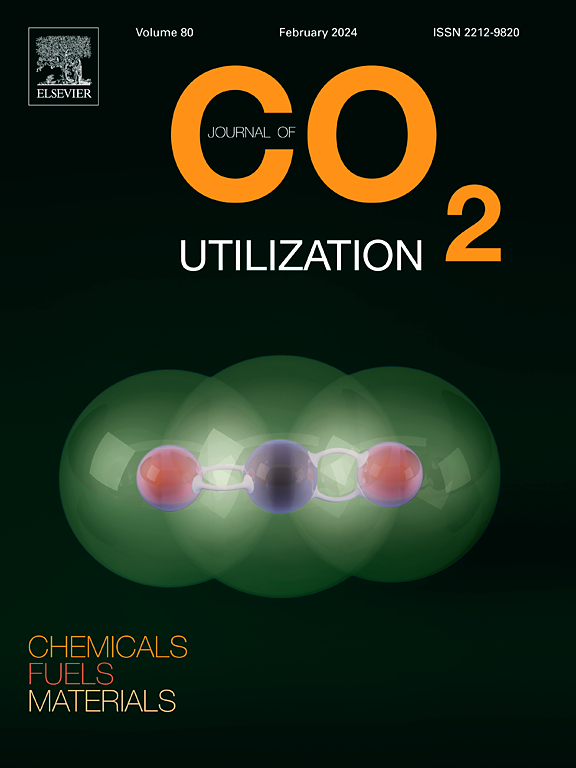协同路径:中国碳中和目标中的二氧化碳储存和地下资源利用
IF 8.4
2区 工程技术
Q1 CHEMISTRY, MULTIDISCIPLINARY
引用次数: 0
摘要
碳捕集与封存(CCS)作为实现碳中和的关键负排放技术,已经从单一的碳捕集模式发展到协同利用模式。这一演变为通过地下资源的共同利用来平衡减排和经济效益提供了创新的解决方案。然而,对中国省级碳排放模式和地下储层协同机制的系统认识仍然不足,确保储层安全与资源效率整合的技术框架有限。本研究基于中国各省碳排放数据和化石能源(原煤、原油、天然气)资源,建立了碳捕集与封存-资源协同(CGS-Resource)模型,旨在:(1)分析2030年前碳排放趋势和能源转型;(2)设计省级协同利用路径;(3)协作潜力评估;(4)建立综合地质资源与二氧化碳封存利用(ICGCSU)框架;(5)阐明ICGCSU对碳中和的战略贡献。结果表明,山西省和新疆省的温室气体排放呈持续增长趋势,预计到2030年将分别达到303438亿吨和111206亿吨,大大超过稳定排放省份。能源生产呈现差异化转型特征:原油产量企稳、天然气持续增长、原煤逐步扩张。陕西(SX1)、新疆(XJ)、新疆(SX)和内蒙古(NMG)具有显著的ccs -地下资源协同开发潜力,值得作为大规模碳汇和资源协同的优先实施区。ICGCSU框架在降低二氧化碳排放强度方面是有效的。本研究为中国碳中和路径提供科学决策支持,同时为区域资源优化管理奠定方法论基础。本文章由计算机程序翻译,如有差异,请以英文原文为准。
Synergistic pathways: CO2 storage and subsurface resource utilization in China’s carbon-neutral goal
Carbon capcture and storage (CCS), as a pivotal negative emission technology for achieving carbon neutrality, has evolved from a singular storage model to synergistic utilization patterns. This evolution enables innovative solutions for balancing emission reduction and economic benefits through subsurface resource co-utilization. However, systematic understanding of China’s provincial carbon emission patterns and subsurface reservoir collaboration mechanisms remains inadequate, with limited technical frameworks ensuring storage safety-resource efficiency integration. This study establishes a carbon capcture and storage-resource synergy (CGS-Resource) model based on China’s provincial carbon emission data and fossil energy resources (raw coal, crude oil, natural gas), designed to: (1) analyzing pre-2030 emission trends and energy transitions; (2) designing provincial co-utilization pathways; (3) assessing collaborative potential; (4) establishing an integrated comprehensive georesource and CO2 storage utilization (ICGCSU) framework; (5) elucidating ICGCSU’s strategic contributions to carbon neutrality. The findings reveal that shanxi (SX) and xinjiang (XJ) exhibit persistent emission growth trajectories, projected to reach 3034.38 Mt and 1112.06 Mt respectively by 2030, substantially exceeding stabilized-emission provinces. Energy production demonstrates differentiated transition characteristics: crude oil output stabilizes, natural gas maintains sustained growth, while raw coal experiences gradual expansion. Shaanxi (SX1), XJ, SX, and Inner Mongolia (NMG) demonstrate remarkable CCS-subsurface resource co-development potential, warranting selection as priority implementation zones for large-scale carbon sequestration and resource synergy. The ICGCSU framework proves effective in reducing CO2 emission intensity. This research provides scientific decision-making support for China’s carbon neutrality pathway while establishing methodological foundations for optimized regional resource management.
求助全文
通过发布文献求助,成功后即可免费获取论文全文。
去求助
来源期刊

Journal of CO2 Utilization
CHEMISTRY, MULTIDISCIPLINARY-ENGINEERING, CHEMICAL
CiteScore
13.90
自引率
10.40%
发文量
406
审稿时长
2.8 months
期刊介绍:
The Journal of CO2 Utilization offers a single, multi-disciplinary, scholarly platform for the exchange of novel research in the field of CO2 re-use for scientists and engineers in chemicals, fuels and materials.
The emphasis is on the dissemination of leading-edge research from basic science to the development of new processes, technologies and applications.
The Journal of CO2 Utilization publishes original peer-reviewed research papers, reviews, and short communications, including experimental and theoretical work, and analytical models and simulations.
 求助内容:
求助内容: 应助结果提醒方式:
应助结果提醒方式:


